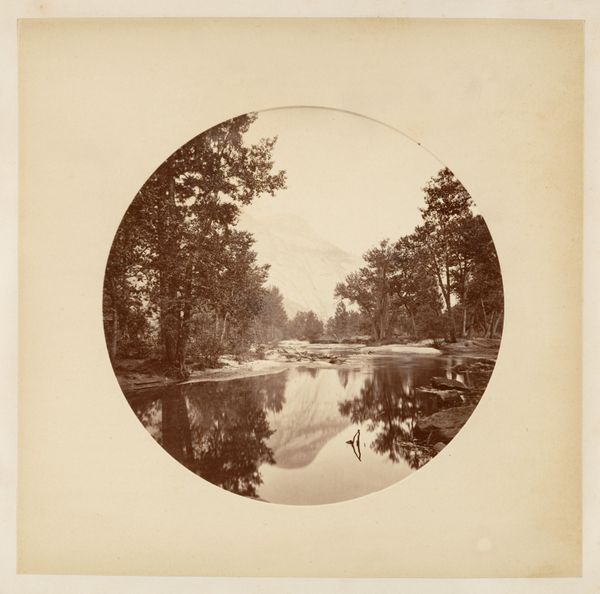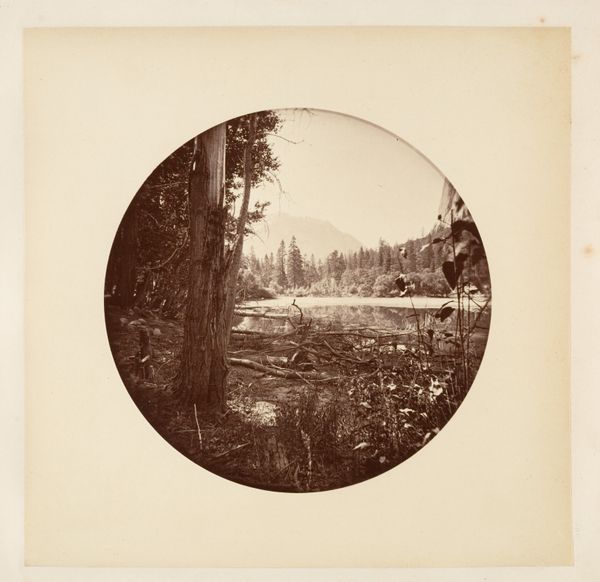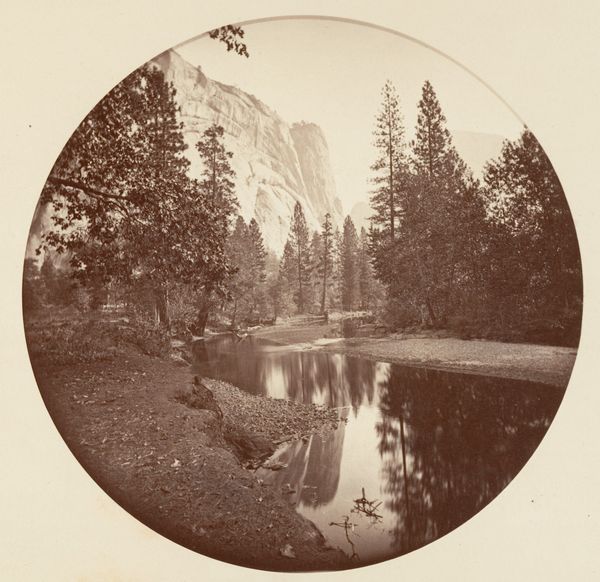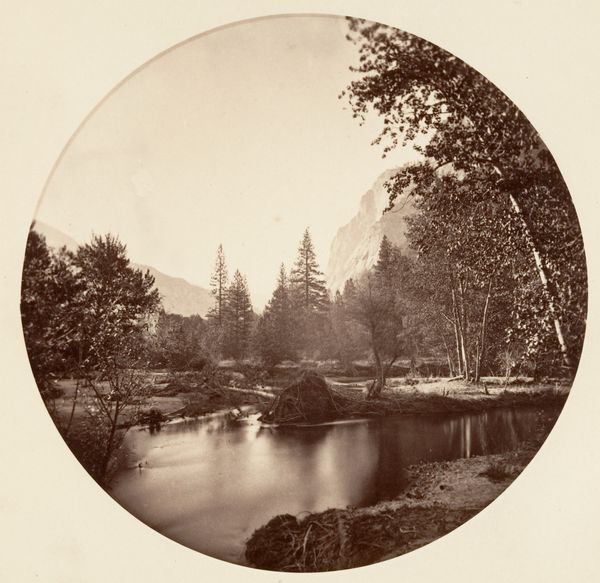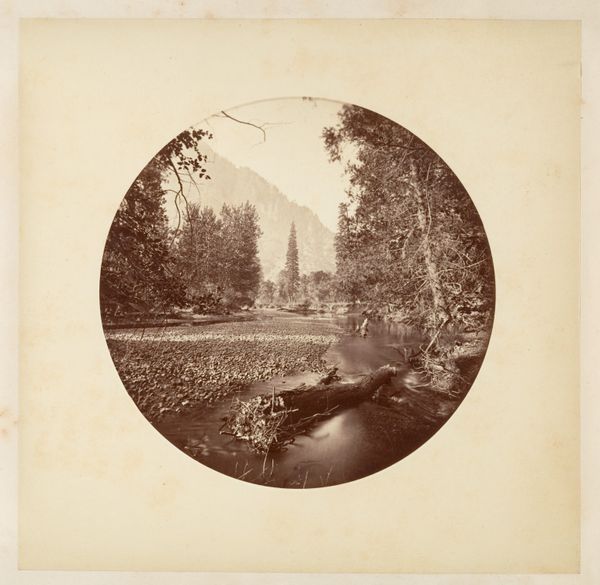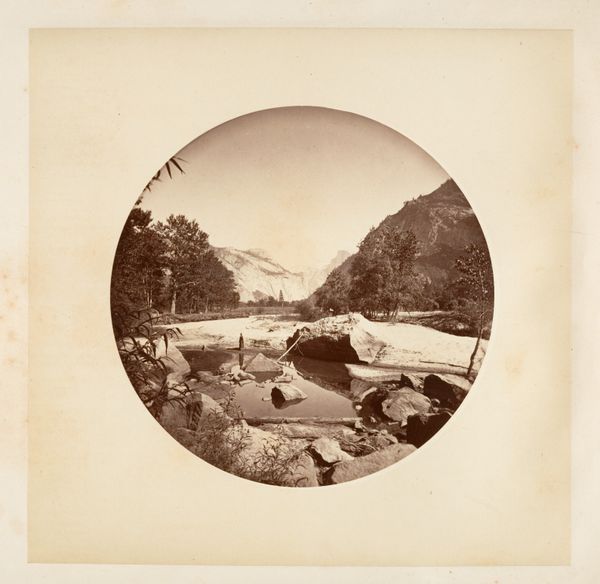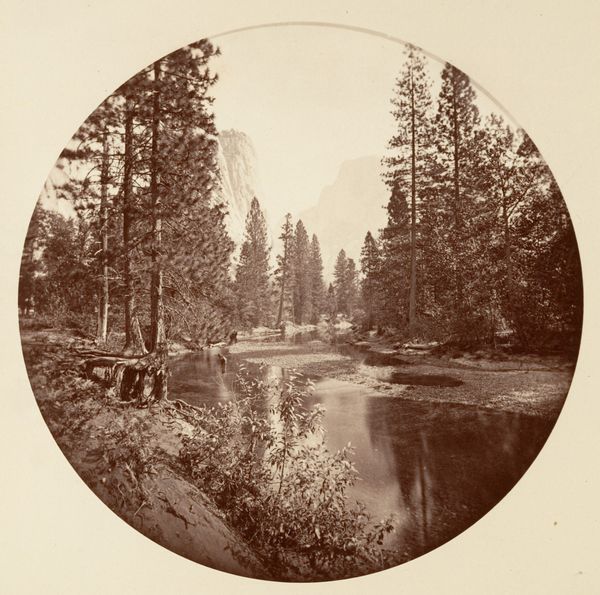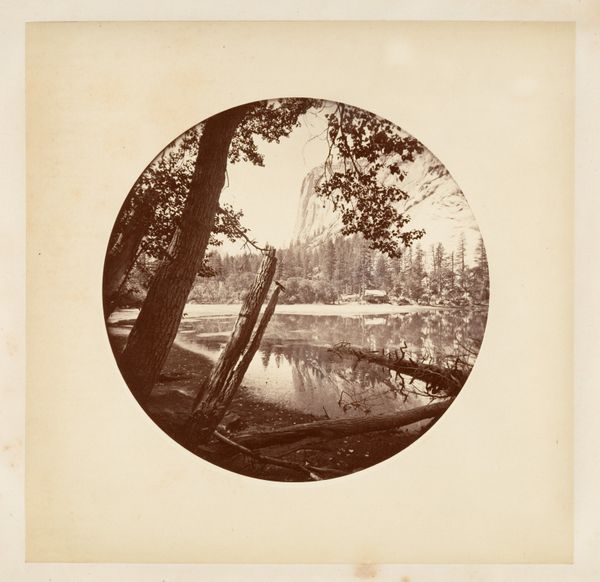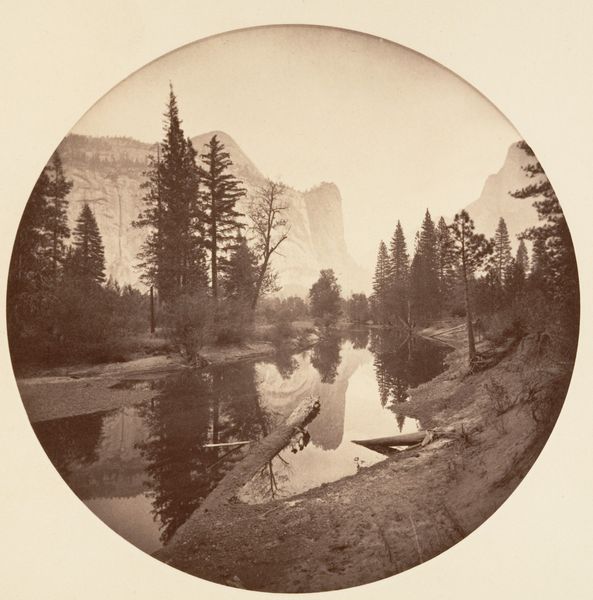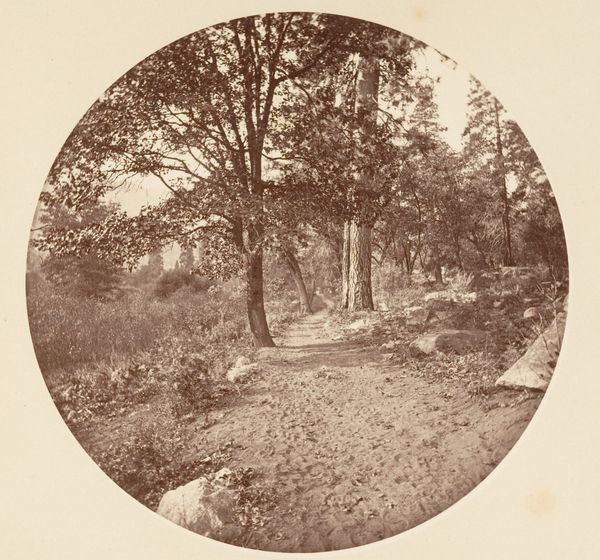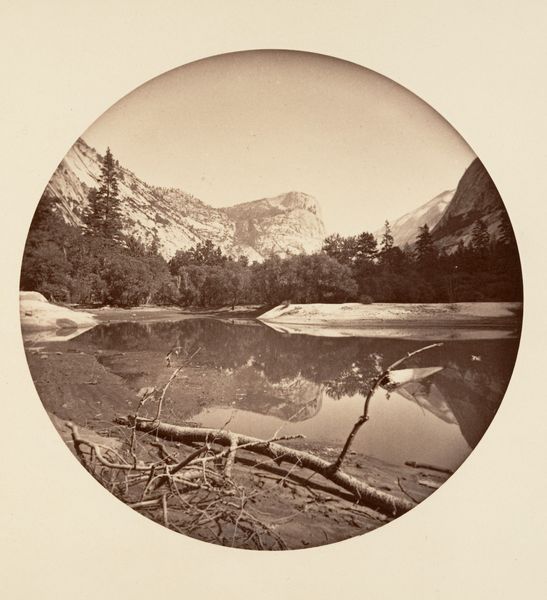![[Yosemite National Park, California] by Carleton E. Watkins](/_next/image?url=https%3A%2F%2Fd2w8kbdekdi1gv.cloudfront.net%2FeyJidWNrZXQiOiAiYXJ0ZXJhLWltYWdlcy1idWNrZXQiLCAia2V5IjogImFydHdvcmtzLzc1MjM0Mjk1LTExYmQtNGVhOS1iYmQyLTQ2MmU0OWJmZGZkYS83NTIzNDI5NS0xMWJkLTRlYTktYmJkMi00NjJlNDliZmRmZGFfZnVsbC5qcGciLCAiZWRpdHMiOiB7InJlc2l6ZSI6IHsid2lkdGgiOiAxOTIwLCAiaGVpZ2h0IjogMTkyMCwgImZpdCI6ICJpbnNpZGUifX19&w=3840&q=75)
Dimensions: Image: 12.5 x 12.5 cm (4 15/16 x 4 15/16 in.), circular Album page: 24 x 25.1 cm (9 7/16 x 9 7/8 in.)
Copyright: Public Domain
Curator: Welcome. Here we have Carleton Watkins’s photograph "[Yosemite National Park, California]," captured sometime between 1876 and 1880. Watkins was deeply involved in documenting the American West. Editor: The first thing I notice is how…contained it feels. The circular frame, like looking through a giant spyglass, gives the wilderness this quaint, almost domestic quality. What's with that choice, framing a landscape this way? Curator: The circular format, known as a tondo, was a popular aesthetic choice during this period, especially among photographers who were elevating the medium to an art form, mimicking painting and high art traditions to encourage photographic imagery acceptance as such. Watkins and others embraced this in presenting these vast western landscapes. Editor: Ah, so a way of saying, "Look, photography can be art too!" I get it. But, look closer…the mirrored image in the water...there’s this sense of two worlds, above and below. What would have been the photographic technique behind that? Curator: Watkins utilized the wet plate collodion process, a technique which created incredibly sharp detail when done well but also required extensive equipment, not to mention significant skill and artistry, to handle on-site in remote environments such as Yosemite. His glass negatives were enormous, sometimes up to 18x22 inches, resulting in prints like this with astounding resolution. Editor: Wow. Seriously, thinking about hauling all that equipment up a mountain…It does feel less like simple documentation now, more like a really considered act of devotion. It's also a very quiet picture; mostly shades of brown with that amazing reflective pool as an intriguing addition. Do you see that stillness, that reflective sense? It feels spiritual almost...a serene take in complete opposition to our concept now, of visiting parks to scream on rollercoasters. Curator: That's a key point. These images directly impacted how the East perceived the West. His photographs of Yosemite were instrumental in convincing Congress to designate it as a national park in 1864, and this photo here reminds viewers of the imperative for conservation. These lands were important to preserve. Editor: It’s strange, isn't it? A photograph that romanticized wilderness also paved the way for its protection—and accessibility. So maybe that's why I initially felt that weird sense of…domestication. A cycle really. Curator: Yes. A photograph can freeze a moment and trigger major action and progress as society evolves. Editor: Makes you think about the power, but also the responsibility, inherent in capturing any image, doesn't it? So, thanks to Watkins, for lugging all that gear and setting aside time for conservation—that matters a lot.
Comments
No comments
Be the first to comment and join the conversation on the ultimate creative platform.
